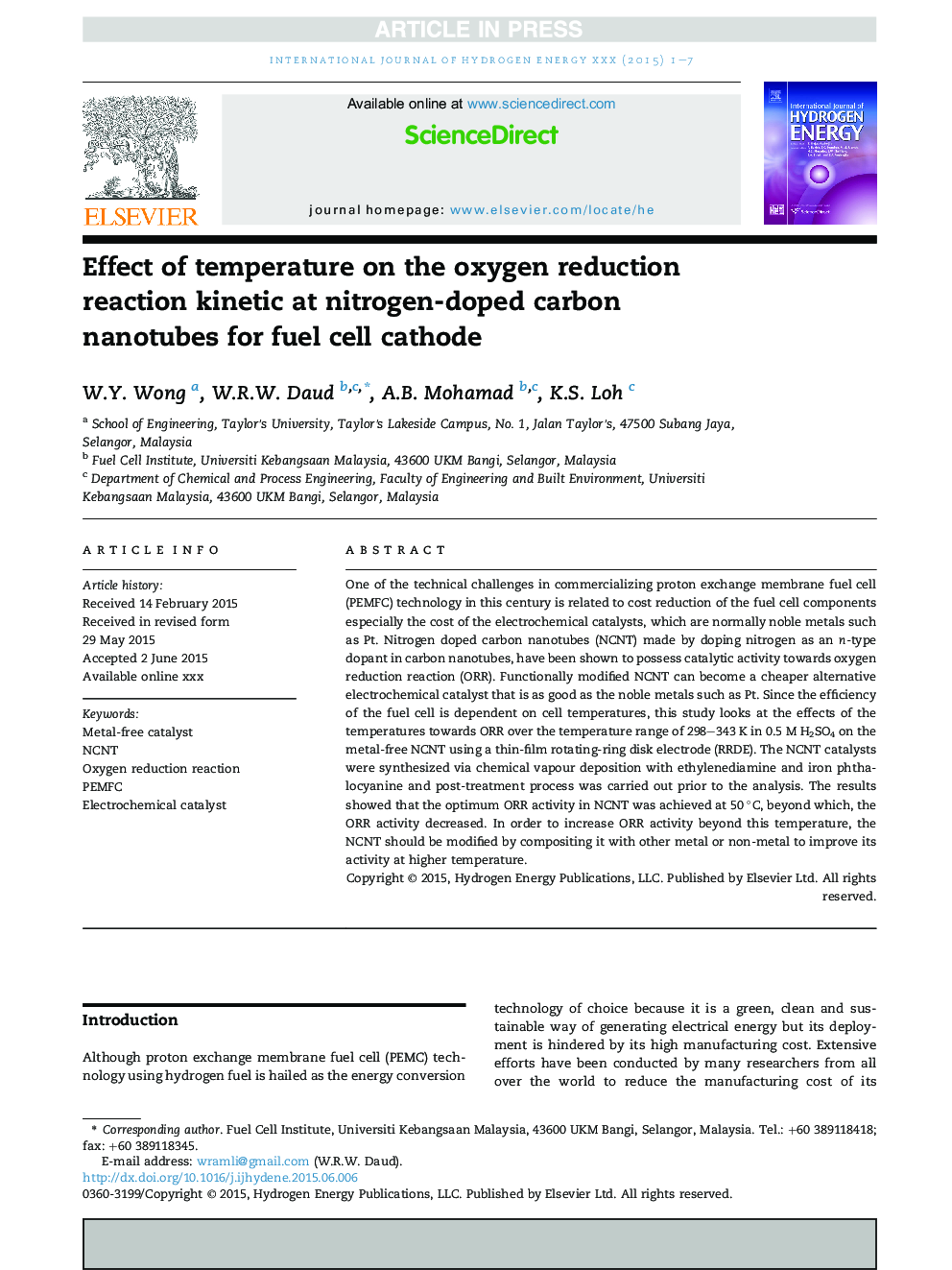| Article ID | Journal | Published Year | Pages | File Type |
|---|---|---|---|---|
| 7714027 | International Journal of Hydrogen Energy | 2015 | 7 Pages |
Abstract
One of the technical challenges in commercializing proton exchange membrane fuel cell (PEMFC) technology in this century is related to cost reduction of the fuel cell components especially the cost of the electrochemical catalysts, which are normally noble metals such as Pt. Nitrogen doped carbon nanotubes (NCNT) made by doping nitrogen as an n-type dopant in carbon nanotubes, have been shown to possess catalytic activity towards oxygen reduction reaction (ORR). Functionally modified NCNT can become a cheaper alternative electrochemical catalyst that is as good as the noble metals such as Pt. Since the efficiency of the fuel cell is dependent on cell temperatures, this study looks at the effects of the temperatures towards ORR over the temperature range of 298-343 K in 0.5 M H2SO4 on the metal-free NCNT using a thin-film rotating-ring disk electrode (RRDE). The NCNT catalysts were synthesized via chemical vapour deposition with ethylenediamine and iron phthalocyanine and post-treatment process was carried out prior to the analysis. The results showed that the optimum ORR activity in NCNT was achieved at 50 °C, beyond which, the ORR activity decreased. In order to increase ORR activity beyond this temperature, the NCNT should be modified by compositing it with other metal or non-metal to improve its activity at higher temperature.
Related Topics
Physical Sciences and Engineering
Chemistry
Electrochemistry
Authors
W.Y. Wong, W.R.W. Daud, A.B. Mohamad, K.S. Loh,
